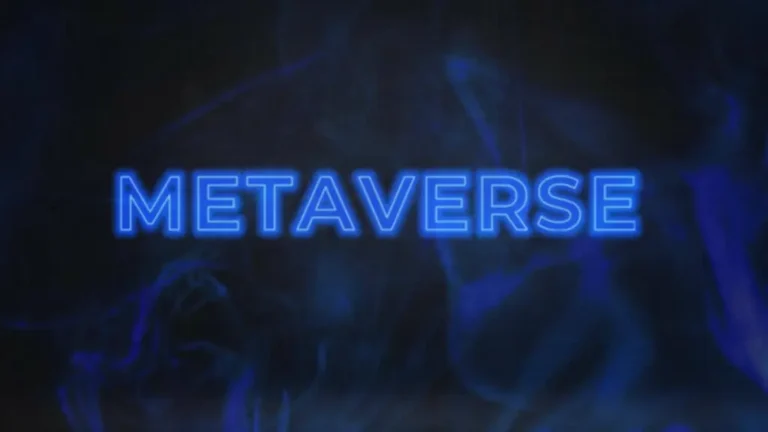As quickly as a corporation scales up its use of containers, they become tough to handle, and issues like networking, storage administration, and safety arise. Connect your tools in seconds and obtain gitlab consulting a clearer picture of GitHub Copilot in an hour or less. Continuous deployment must be the goal of most firms that aren’t constrained by regulatory or other necessities. This fixed monitoring for improvement helps drive adoption even because the person base and usage patterns change. Approach every CI/CD problem with discussions centered round, “How would possibly we … ?” instead of, “We can’t try this.”
What’s Continuous Delivery (cd)?

Security within the microservices-based pipeline is enforced at multiple ranges, one of which entails treating every microservice as a possible safety boundary with its personal set of permissions and controls. Following container safety practices such as picture scanning and runtime protection safeguards the integrity of microservices. A next generation CI/CD platform designed for cloud-native applications, providing dynamic builds, progressive delivery, and rather more. Some teams might allocate model control management to a particular department or job position throughout the CI/CD pipeline. There is no easier method to construct and maintain a versatile and high-quality pipeline than Opsera’s Continuous Orchestration. Build drag-and-drop declarative pipelines, with safety and quality piped in.
Begin Building Your Ci/cd Workflow
The major public cloud suppliers all offer CI/CD solutions, along with GitLab, CircleCI, Travis CI, Atlassian Bamboo, and a lot of others. If the construct completes successfully and passes preliminary test scans, it strikes to the CI/CD testing part. CI ends when a build efficiently completes preliminary testing and is prepared to move to extra comprehensive testing, corresponding to consumer acceptance testing. If the build fails testing, the branch can receive additional attention — corresponding to bug fixes or extra additions — and the build/test cycle can repeat until a build is successful. OpenShift Pipelines is a CI/CD resolution based on the open source Tekton project. Discover tips, technical guides, and finest practices in our biweekly publication only for devs.
Utilizing Codefresh Workflows To Automate Ci/cd Pipelines
Such iteration relies on well-planned and lively pipelines designed to support multiple iterations in various phases of the development cycle concurrently — and keep complete development groups continuously busy. The secret is that all of the stages that compose a CI/CD pipeline are working simultaneously on completely different iterations of the software. CI/CD encompasses a series of automated processes — from code growth to manufacturing deployment — that allow frequent and reliable delivery of code adjustments to the production setting. CI/CD bridges the gaps between growth and operation activities and teams by enforcing automation in building, testing and deployment of functions. The process contrasts with conventional strategies the place a group of software updates were built-in into one giant batch before deploying the newer version. In DevOps, Continuous Delivery (CD) is a follow in which all code adjustments are routinely examined and readied for release.
CI/CD practices assist builders incorporate code changes, bug repair, and so on. rapidly, they usually help operations groups deploy and replace software program, rapidly and easily. Continuous delivery is the practice of routinely deploying code adjustments to a pre-production surroundings for rapid deployment to production. It builds on continuous integration by centralizing code for deployment in a web-based repository after which deploying that code to manufacturing based mostly on the needs of your team and shoppers. AWS CodeBuild, a managed construct service, compiles supply code, runs checks, and produces ready-to-deploy software program packages. AWS CodePipeline, a steady integration and steady supply service, orchestrates the workflow from supply code to deployment, permitting you to model, visualize, and automate your software program release process. Implementing CD requires automation of the complete software growth lifecycle, together with builds, exams, setting setup, and software deployment.

By standardizing builds, growing checks, and automating deployments, groups can dedicate extra time to enhancing applications, and less time on the technical processes of delivering code to different environments. CI, brief for Continuous Integration, is a software program improvement practice by which all builders merge code adjustments in a central repository multiple times a day. CD stands for Continuous Delivery, which on prime of Continuous Integration provides the follow of automating the entire software program release process.
An effective CI/CD pipeline uses open supply instruments for integration, testing and deployment. Correct configuration of your CI/CD course of also impacts the success of the software program improvement pipeline. Lastly, the modifications are deployed, and the ultimate product is moved into production. In continuous delivery, merchandise or code are despatched to repositories and moved into manufacturing or deployment by human approval.
Every step within the pipeline is automated – from the second code is pushed to the repository it is constructed, built-in, tested, deployed and monitored through automated mechanisms. CD can sometimes also check with Continuous Deployment – a practice that is the subsequent stage from Continuous Delivery. Once code has been made release-ready, Continuous Deployment is the process of routinely pushing it to the manufacturing environments. Because CI/CD simplifies software program development, groups can deliver higher-quality functions. Developers can even validate application safety during improvement as an alternative of waiting for the testing stage, serving to to reduce back or avoid rework of utility code. Teams using CI/CD also are inclined to front-load their quality checks, like starting out with model control configuration and follow definitions.
- In trendy application growth, the aim is to have multiple developers working concurrently on different options of the identical app.
- CI and CD stand for continuous integration and continuous delivery/continuous deployment.
- With help for all leading model management methods and integration with popular construct, test and package management instruments, TeamCity Pipelines can remodel your improvement workflows into environment friendly, automated pipelines.
- A container is a standardized unit that may be deployed in any setting, and is immutable, which means that its configuration always stays the same until it is torn down and changed.
- Adopting agile DevOps practices could be complicated, particularly when there’s a have to integrate a brand new CI/CD pipeline into an existing workflow or project.
- CI works to handle this problem by incessantly merging changes in a shared branch, sometimes referred to as a trunk department.
As the day ends, the CI/CD pipeline stands prepared for the subsequent commit, persevering with its mission to ship high-quality software at a rapid tempo. The pipeline’s day could additionally be repetitive, however each repetition brings the group nearer their objective of delivering value to customers. Codefresh workflows redefine the way pipelines are created by bringing GitOps into the combination and adopting a Git-based course of instead of the same old ClickOps. CI/CD additionally helps cut back dependencies inside teams, which means developers can work in silos on their options with the confidence that code will combine without failing. For organizations that count on to grow, CI/CD can simply scale by group sizes, codebases, and infrastructure. CI/CD can cut back code integration workflows that are no longer wanted, thereby additionally eliminating unnecessary team communications.
By moving away from conventional waterfall methods, engineers and developers are now not engaged in repetitive actions which might be typically extremely depending on completing other duties. Continuous integration is about quickly integrating code from multiple builders, and continuous delivery is about mechanically deploying that code to manufacturing. Both depend on automation, and — when mixed — steady integration and continuous delivery can improve the velocity, effectiveness, and security of the SDLC. A CI/CD pipeline combines code building, testing, and deployment into one steady process ensuring that all modifications to the primary department code are releasable to production. An automated CI/CD pipeline prevents handbook errors, supplies standardized feedback loops to developers, and allows quick software program iterations.
Once Continuous Integration takes care of code build and integration, delivery pushes modifications to the testing setting after which retains it ready for manufacturing. Essentially, with CD in place, a team will all the time have a deployment-ready product that has been examined and cleared for public launch. Continuous Delivery takes the code past simple unit tests that are run in the CI stage. It permits the software to be run by way of a quantity of evaluation layers in order to confirm functionality from all dimensions. This can embrace integration exams, UI checks, load exams, end-to-end exams, API exams, regression tests, security exams, and so on. It allows developers to validate the product more comprehensively and weed out issues before it reaches buyer hands.
In brief, CI is a set of practices carried out as builders are writing code, and CD is a set of practices performed after the code is completed. The responses might help teams prioritize which processes must be automated first. After improvement groups determine how a portfolio might be aligned in a CI/CD model (that is, how a portfolio’s belongings shall be grouped), teams should make choices about who will work where. Know which property support each process and functionality and group them accordingly.
They permit you to specify dependencies between jobs, guaranteeing that they run in the proper sequence. For instance, you would possibly configure a workflow where a deployment job solely runs if the previous test jobs have succeeded. Workflows are the orchestration layer inside CI/CD pipelines that handle how jobs and steps are sequenced and interact. You can outline specific necessities for each job, such because the runtime surroundings and the sources needed. Failure at this stage exposes issues you didn’t conceive of when writing the code. The purpose of this stage is to give engineers suggestions shortly, whereas the cause of the problem is recent of their minds, so their circulate state won’t be thrown off course.
Many large-scale projects run tests in multiple stages, starting with smoke exams that perform fast sanity checks to end-to-end integration tests that test the whole system from the user’s perspective. In this section, we run automated checks to validate our code’s correctness and the conduct of our product. The check stage acts as a security internet that forestalls simply reproducible bugs from reaching the end-users. Failure in each stage typically triggers a notification—via e-mail, Slack, and so forth.—to let the responsible builders know concerning the cause. Otherwise, the entire group receives a notification after each successful deployment to manufacturing.
If you’re new to CI/CD, understanding what pipelines do and are able to will assist you to capture the true value of DevOps and automation. Ansible Automation Platform additionally integrates with Red Hat Advanced Cluster Management for Kubernetes, permitting you to orchestrate Kubernetes clusters within your CI/CD pipeline. You can also use the human-readable automation language to extra simply construct and preserve Red Hat OpenShift operators. Teams may wish to consider managed CI/CD instruments, which can be found from a variety of vendors.

Transform Your Business With AI Software Development Solutions https://www.globalcloudteam.com/